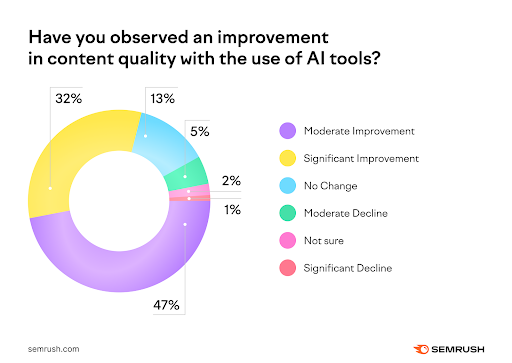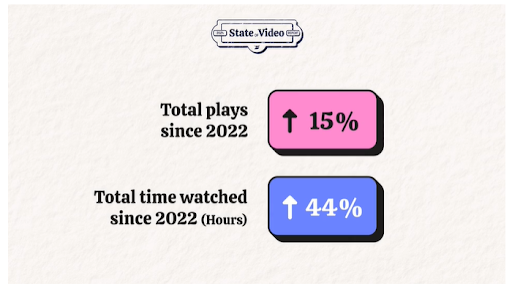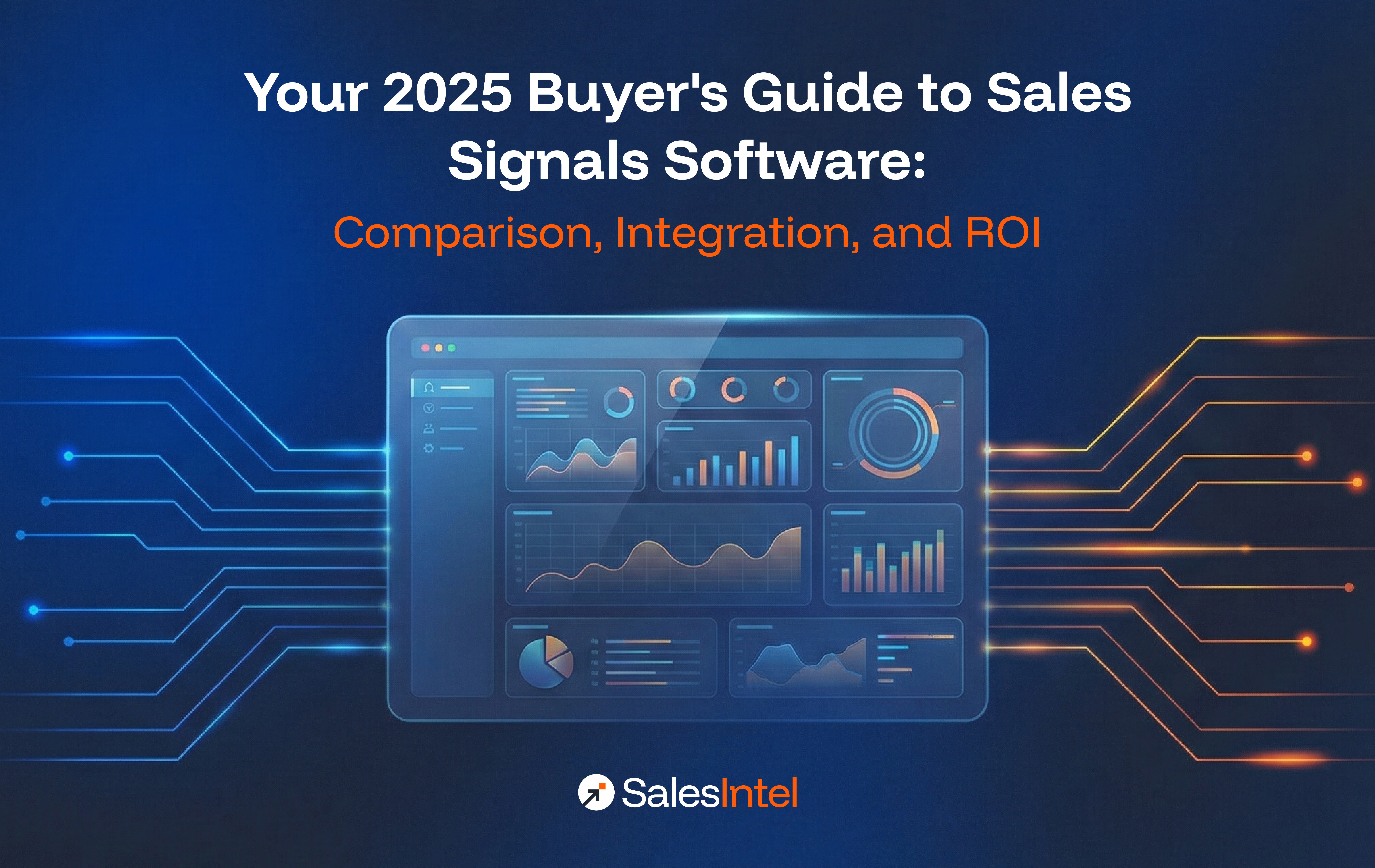With each passing year, new technologies, consumer behaviors, and market dynamics reshape the landscape, creating challenges and opportunities for marketers. Content marketers are very excited about what the future holds.
Audiences are seeking genuine connections, information, and advice from trusted sources. If you can meet them there, you’ll already be ahead of most other marketers.
Let’s break it down. From AI’s evolving role in content creation to navigating the world of social media, we will explore the trends to look out for in content marketing. We have listed 13 content marketing trends that will equip you to tackle whatever the rest of 2025 brings your way. But before that, we will quickly examine how important content marketing is for your business.
What is B2B Content Marketing?
B2B content marketing involves creating and sharing valuable content, such as industry articles, blog posts, videos, whitepapers, case studies, or social media posts. Unlike traditional selling mindset, which focuses on directly promoting products or services, B2B content marketing provides valuable information and solutions to potential customers.
Why is Content Marketing Important to B2B?
Unlike paid ads and emails which has a limited lifespan and requires continuous investment to maintain visibility, content marketing assets can continue to deliver value over an extended period. Articles, blog posts, and other types of content remain accessible online, often ranking in search engines and attracting traffic for months or even years after publication. It can deliver a high return on investment (ROI).
Here are more reasons why content marketing is crucial for every business:
Builds Trust and Credibility:
By consistently providing valuable content, you can establish yourself as an expert in your field. When potential customers see that you are knowledgeable and helpful, they are more likely to trust you and consider you a reliable partner.
Generates Leads and Drives Sales:
Content marketing helps attract leads by addressing potential customer’s pain points and challenges. When you provide solutions and helpful information, you can identify the interest of other potential customers looking for answers, ultimately leading to more engagement and interaction with your brand.
Supports the Buying Process:
The buying process is often longer and more complex in B2B transactions than in B2C transactions. Content marketing can help guide potential customers through each stage of the buying journey. From awareness to consideration and ultimately to decision-making, provide the information they need at each step.
Creates a Long-Term Asset:
Content is always an asset for your sales and marketing team. It may require time and resources to create high-quality content, but it is worth creating content with valuable information. Everyone on the internet is continuously searching for information. What looks like already-known information to one person today can be new information for another person. Email and ads have a short lifespan. However, once published, content can continue attracting leads and driving sales over time.
Enhances SEO and Visibility:
Creating valuable content can improve your search engine rankings, making it easier for potential customers to you them online. Additionally, when you share content on social media and other platforms, it increases you visibility and reach within your target audience.
Fosters Long-Term Relationships:
Content marketing isn’t just about making a sale; it’s about building lasting customer relationships. By consistently providing valuable content, your business can stay top-of-mind with your audience and nurture long-term relationships that lead to repeat business and referrals.
Top 13 B2b Content Marketing Trends
Trend #1: AI-Assisted Content
AI-assisted content involves leveraging artificial intelligence (AI) technologies to create, personalize, and optimize content. According to a survey by Semrush, 68% of businesses see an increase in content marketing ROI using AI.
Semrush’s survey also shows that AI-assisted content has shown improved content quality for 79% of respondents. This chart shows the observations from Semrush’s survey on content quality improvements:
Here’s how AI-assisted content contributes to your content marketing strategy:
-
Content Creation:
AI tools can generate content by analyzing data and patterns and automatically creating articles, blog posts, or social media updates. You can also leverage buyer intent data to create content focusing on what your potential customers want to read, listen to, or watch.
-
Personalization:
AI can analyze user data to personalize content for individual users or segments of your audience. This involves delivering customized recommendations, product suggestions, or content tailored to specific interests or behaviors.
-
Optimization:
AI can analyze content’s performance and make recommendations for improvement. This includes optimizing headlines, images, and even the timing of content distribution to maximize engagement and reach.
-
Chatbots and Virtual Assistants:
AI-powered chatbots and virtual assistants can interact with users in real time, providing assistance, answering questions, and guiding them through buying.
Chatbots can recommend specific pieces of content based on user inquiries, preferences, and browsing behavior. This not only helps users discover relevant content but also increases the visibility and consumption of your content assets.
Virtual chat allows for personalized interactions, helping users find relevant content tailored to their needs and interests. This personalized approach enhances user experience and encourages engagement with your content. This can improve customer service and lead to higher conversion rates.
Trend #2: Video Content
Video content has become increasingly popular in content marketing due to its ability to captivate audiences and convey information effectively. Here’s why creating more video content is a crucial trend:
-
Engagement:
Video content tends to capture attention better than text or images alone. It can convey emotions, tell stories, and showcase products or services in a more dynamic and engaging way.
-
Versatility:
Video content can take many forms, including explainer videos, product demonstrations, tutorials, interviews, and live streams. This versatility allows you to tailor content to different platforms and audience preferences.
-
SEO Benefits:
Video content can improve search engine rankings and increase website traffic. Search engines like Google often prioritize video content in search results. The data by Backlinko shows that pages with a video had a significantly lower (11%) Bounce Rate compared to pages without a video. So, videos embedded on websites can increase dwell time and reduce bounce rates.
Many social media platforms prioritize video content in their algorithms, making it more likely to be seen and shared by users. According to a survey by Wistia, viewers aren’t just clicking on videos; they’re also diving deeper into online video content more than ever before.
(Image Source: Wistia.com)
Since videos can explain more in less time, it often generate more likes, comments, and shares than other types of content, helping to extend reach and engagement.
Trend #3: User-Generated Content
User-generated content (UGC) encourages customers, viewers, or followers to create and share content related to your brand or product. Here’s why UCG is becoming a significant trend in content marketing:
-
Authenticity:
When a UGC is perceived as more authentic and trustworthy than branded content because it comes directly from other users rather than the brand itself. This authenticity can build credibility and strengthen relationships with customers.
-
Engagement:
UGC often sparks conversations and interactions among users, driving engagement on social media platforms and other channels. Customers who see their peers using and enjoying a product are more likely to engage with and consider that brand. trust and consider it themselves.
-
Cost-Effectiveness:
UGC can be a cost-effective way to generate content; you don’t have to create everything from scratch. You can save time and resources while maintaining a consistent online presence by leveraging organic content your customers make, like reviews, quotes, and videos.
-
Community Building:
Encouraging UGC can foster a sense of community among customers, creating a space where they can share experiences, offer advice, and connect with like-minded individuals who share an interest in your brand or product.
Trend #4: Interactive Content
Interactive content actively engages the audience, encouraging them to participate rather than passively consume. Here’s a breakdown:
-
Types of Interactive Content:
This includes quizzes, polls, surveys, assessments, interactive infographics, calculators, contests, and more. These formats allow users to interact with the content by answering questions, making choices, or providing input.
-
Benefits:
Interactive content is effective because it grabs attention and encourages engagement. It’s more memorable and shareable than static content, and it provides valuable user preferences and behavior data.
-
Examples:
A clothing brand might create a quiz to help customers find their style, while a financial company might offer a retirement savings calculator to help users plan for the future.
Trend #5: Conversational Content
Conversational content aims to mimic natural human conversation in marketing communications. Here’s what it entails:
-
Tone and Style:
Conversational content is characterized by a friendly, informal tone that resonates with the audience. This content often includes questions, prompts, and responses to encourage interaction.
-
Channels:
It’s commonly used on social media, chatbots, messaging apps, and email marketing. You can use chatbots and automated messaging to engage with customers in real time, answer questions, and assist them with the information they seek.
-
Benefits:
Conversational content humanizes your content, builds customer rapport, and fosters a sense of connection. This type of content is particularly effective for customer support, lead generation, and driving conversions.
Trend #6: Personalized & Segmented Content
Personalizing and segmenting content involves tailoring content to specific audience segments based on their preferences, behaviors, demographics, or other characteristics. Here’s how it works:
-
Personalization:
Content is customized for individual users, providing recommendations, offers, or information relevant to their interests and needs. This can include personalized emails, product recommendations, or website content.
-
Segmentation:
Audience segments are identified based on shared traits or behaviors, allowing you to deliver targeted content to different groups. Segmentation can be based on demographics, purchase history, geographic location, or engagement level.
-
Benefits:
Personalized and segmented content increases engagement, improves conversion rates, and enhances customer experience.
Trend #7: Influencer Content
Influencer content involves collaborating with individuals with a significant following to create content promoting a brand or product. Here’s what you need to know:
-
Partnerships:
Brands collaborate with influencers to create content that showcases their products or services. Influencers may create sponsored posts, reviews, tutorials, or endorsements that reach their followers. When the influencer promotes your content, it is more likely to get consumed by the followers (that may include your potential customers).
-
Audience Reach:
Influencers have built-in audiences that trust their recommendations, making influencer content an effective way to reach new customers and build brand awareness.
-
Credibility and Trust:
Influencers’ endorsements are perceived as genuine and trustworthy. Followers prefer what their influencers suggest, leading to higher engagement and conversion levels.
Social media content is about creating posts, images, videos, and stories you share on platforms like Facebook, Instagram, Twitter, and LinkedIn.
-
Engagement:
When you post on social media, people can like, comment, and share your content, which helps you connect with them and build stronger relationships.
-
Brand Awareness:
Regularly posting makes more people aware of your brand and what you offer.
-
Community Building:
Social media lets you create a community around your brand where people can share their experiences, ask questions, and support each other.
-
Trends and Updates:
Providing trends and updates using social media is a great way to keep your audience informed about what’s happening in your industry and share news, updates, and exciting announcements with your followers.
Trend #9: Thought Leadership
Thought leadership is about showing that you’re an expert and a leader in your industry.
-
Expertise Sharing:
You share your knowledge and insights through articles, blog posts, whitepapers, and presentations, showing that you are an expert in your field.
-
Building Trust:
When people see that you’re knowledgeable and innovative, they trust you more.
-
Networking Opportunities:
Being a thought leader can lead to partnerships, speaking opportunities, and connections with other influential people in your industry.
-
Brand Differentiation:
It helps you stand out from competitors by offering fresh perspectives and solutions to industry challenges.
Trend #10: Events
Hosting events means organizing in-person or online gatherings like webinars, workshops, conferences, or networking events.
-
Audience Engagement:
Events give you a chance to interact directly with your audience – helping you build stronger relationships with your current or potential customers and fellow industry professionals.
-
Education and Training:
You can provide valuable learning experiences for attendees by offering workshops, training sessions, and presentations that help them develop new skills and stay up-to-date with industry trends.
-
Lead Generation:
Events can help you find new customers or clients by attracting people interested in what you offer and giving you a chance to demonstrate the effectiveness of your products or services.
-
Brand Awareness:
Hosting events helps people get to know your brand better and positions you as a leader in your industry, especially if your events offer unique and valuable content that people can’t find anywhere else.
Trend #11: Podcasts
Podcast content involves creating audio recordings, often in the form of episodes, that cover specific topics or themes and are shared with listeners through platforms like Spotify, Apple Podcasts, or Google Podcasts.
-
Format:
Podcasts can range from interviews and discussions to solo monologues or storytelling formats.
-
Engagement:
Podcasts are a convenient way for people to consume content while multitasking, like commuting or exercising.
-
Audience Reach:
Podcasts allow your brand to reach new audiences and build relationships with listeners who share their interests.
Hosting a podcast can position your brand as a leader in your industry by sharing valuable insights and knowledge with listeners.
Trend #12: Brand Storytelling
Brand storytelling is about crafting narratives that communicate your brand’s values, mission, and personality to your audience in a compelling and relatable way.
-
Emotion:
Compelling storytelling evokes emotion, helping audiences connect with your brand more deeply.
-
Identity:
It helps define your brand’s identity and differentiate it from competitors by highlighting what makes it unique.
-
Engagement:
Storytelling captivates and engages audiences, keeping them interested and invested in your brand’s message.
-
Memorability:
People like to remember brand stories more than facts or statistics, making brand storytelling an effective way to leave a lasting impression.
Trend #13: Consistency
Consistency in content marketing involves regularly producing and sharing content on a predictable schedule, whether daily, weekly, or monthly.
-
Trust:
Consistent content builds trust with your audience, showing that you’re reliable and committed to providing value over time.
-
Audience Expectations:
Consistency in your content helps you meet your audience’s expectations, who rely on your content for information, entertainment, or inspiration.
-
Visibility:
Consistent posting keeps your brand top-of-mind with your audience and improves your visibility on search engines and social media platforms.
-
Brand Cohesion:
Consistency in your content helps maintain a cohesive brand identity and message across all your marketing channels, reinforcing your brand’s values and objectives.
The Future of Content Marketing: What Lies Ahead
Content marketing constantly evolves, with new trends emerging to meet the changing needs and audience preferences. From leveraging AI technology to fostering engagement through interactive content and social media, you have many opportunities to connect with your target audience meaningfully.
By investing in podcast content, brand storytelling, and maintaining consistency in your content efforts, you can create compelling narratives, build trust, and establish yourself as an industry leader. These trends emphasize the importance of staying relevant, authentic, and engaging in today’s competitive digital landscape.
As we consider future trends, content marketing will continue to play a vital role in driving brand awareness, engagement, and loyalty. By staying informed about emerging trends and adapting your strategies accordingly, you can stay ahead of the curve and achieve your marketing goals in a competitive business space. in an ever-evolving digital world.






